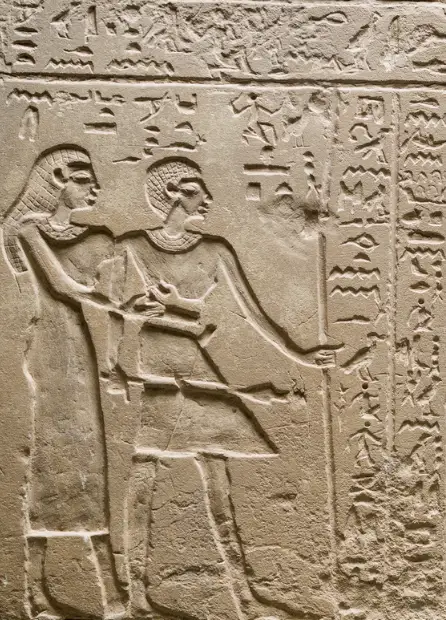The end of the Old Kingdom was followed by a period long regarded as one of chaos and turmoil.
The entirety of the First Intermediate Period represents a particularly challenging historical epoch, spanning approximately 125 years. The few historical records are incomplete and scarce, which makes it challenging to draw definitive conclusions. Manethonian tradition divides the period into four dynasties, which ruled for an impossibly long period. The varying records of the transmission of the Aegyptiaca indicate corrupted or lost administrative records.
| Dynasty | Africanus | Eusebius | Turin King List | Abydos Canon |
| 7 | 70 | 5 | 25 | 17 |
| 8 | 27 | 5 | ||
| 9 | 19 | 4 | ||
| 10 | 19 | 19 | ||
| Kings | 135 | 33 | 25 | 17 |
After this period, the Two Lands was once again reunited into the Middle Kingdom.
The order of Egyptian pharaohs is always subject to change, as new discoveries may alter the accepted order. This applies to all Egyptian dynasties.
Dynasty VII
There is no evidence of a seventh dynasty.
Africanus wrote that 70 kings ruled for 70 days,
while Eusebius wrote that 5 kings of ruled for 75 days.
while Eusebius wrote that 5 kings of ruled for 75 days.
Dynasty VIII
| # | Pharaoh | Alternate names | Reign (BC) |
|---|---|---|---|
| 1 | Netjerikara | Netjerikare, Nitocris | |
| 2 | Menkara | Menkare | |
| 3 | Neferkara II | Neferkare II | |
| 4 | Neferkara Neby | Neferkare Neby | |
| 5 | Djedkara Shemai | Djedkare Shemay | |
| 6 | Neferkara Khendu | Neferkare Khendu | |
| 7 | Merenhor | ||
| 8 | Neferkamin I | Seneferka | |
| 9 | Nikara | Nikare | |
| 10 | Neferkara Tereru | Neferkare Tereru | |
| 11 | Neferkahor | ||
| 12 | Neferkara Pepiseneb | Neferkare Pepiseneb | |
| 13 | Neferkamin Anu | ||
| 14 | Qakara Ibi | ||
| 15 | Neferkaura | Neferkaure | |
| 16 | Neferkauhor | ||
| 17 | Neferirkara II | Neferirkare II |
Dynasty IX
| # | Pharaoh | Alternate names | Reign (BC) |
|---|---|---|---|
| 1 | Meribra Khety I | Meribre Khety I | |
| 2 | Neferkara III | Neferkare III | |
| 3 | Wahkara Khety II | Wahkare Khety II | |
| 4 | Senen | ||
| 5 | Neferkara Khety III | Neferkare Khety I |
Dynasty X
| # | Pharaoh | Alternate names | Reign (BC) |
|---|---|---|---|
| 1 | Nebkaura Khety IV | Nebkaure Khety IV, Khety V | between 2160 and 2130 |
| 2 | Merikara | Merykare | c. 2075–2040 |
| ? | Sekhemkara I | Sekhemkare I | |
| ? | Wadjkara | Wadjkare | |
| ? | Ity | ||
| ? | Imhotep | ||
| ? | Hotep | ||
| ? | Khui | ||
| ? | Isu | ||
| ? | Iytenu |
